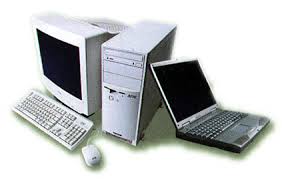What is Computer

What is Computer?
A computer is an advanced electronic device designed to perform a variety of tasks by following a set of instructions, or programs. It processes raw data (input) to generate meaningful results (output) through mathematical and logical operations. The device can also store data for future use. The word “computer” comes from the Latin term computer, meaning “to calculate.”
Key Features of a Computer
Programmability: Computers operate through a sequence of instructions called programs.
Versatility: They handle both numerical and non-numerical computations efficiently.
Integrated Components: Computers consist of hardware (physical components like transistors and circuits) and software (programs and data).
Memory Functionality: They store data, programs, and outputs for immediate or later use.
Origin of Computers
Charles Babbage, known as the “Father of the Computer,” developed the Analytical Engine in 1837. This mechanical computer used punch cards as memory, laying the foundation for modern computing.
Essential Components of a Computer
Processor (CPU): Executes commands from software and hardware.
Memory (RAM): Temporarily stores data for fast access during operations.
Motherboard: Connects all components of the computer.
Storage Device: Permanently saves data (e.g., hard drives, SSDs).
Input Devices: Allow users to interact with the computer (e.g., keyboard, mouse).
Output Devices: Display results (e.g., monitor, printer).

Types of Computers
Computers are categorized based on their size and capabilities:
1. Microcomputers
Features: Single-user systems with basic processing and storage capacities.
Examples: Laptops, desktops, tablets, smartphones.
Uses: General tasks like web browsing, document editing, and multimedia.
2. Minicomputers
Features: Multi-user systems, also called “Midrange Computers.”
Applications: Used in small businesses and universities for specific departmental tasks.
Example: A university’s admission system.
3. Mainframe Computers
Features: Powerful systems capable of handling thousands of users simultaneously.
Uses: Banks, insurance companies, and universities rely on them for large-scale data management.
4. Supercomputers
Features: Fastest and most expensive, designed for specialized tasks.
Applications: Weather forecasting, space exploration, scientific simulations.
Example: NASA uses supercomputers for satellite operations.
5. Workstations
Features: Single-user systems with higher performance than microcomputers.
Uses: Engineering designs, desktop publishing, and software development.
Benefits of Computers
Increased Productivity: Simplifies and accelerates complex tasks like document editing and calculations.
Connectivity: Access to the internet for communication, information, and entertainment.
Storage: Capability to store and organize large amounts of data.
Skill Enhancement: Assists in improving spelling, grammar, and mathematical abilities.
Accessibility: Supports physically challenged individuals with specialized software and hardware.
Entertainment: Facilitates gaming, music, movies, and more.
Everyday Applications of Computers
ATMs: Enable cash withdrawal and balance inquiries.
Digital Transactions: Manage digital records of banking and payments.
Stock Trading: Automates trading with algorithm-driven software.
Smartphones: Function as portable computers for calls, browsing, and apps.
VoIP: Powers internet-based communication like video calls.
Conclusion;
In conclusion, computers are indispensable tools in our daily lives. From simplifying tasks to enabling advanced research and communication, they play a pivotal role in nearly every aspect of modern society. Types of Computer-



0 Comments